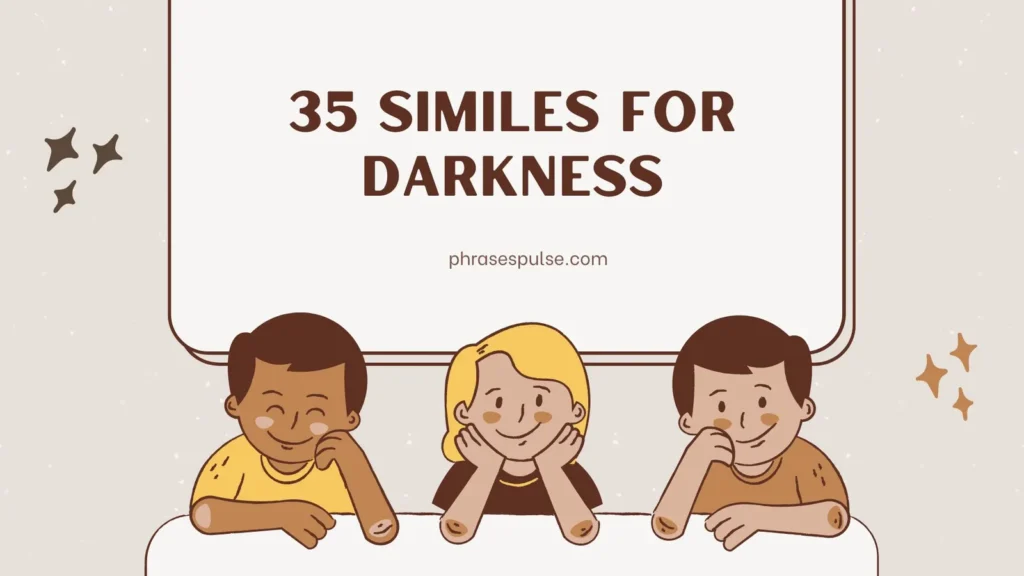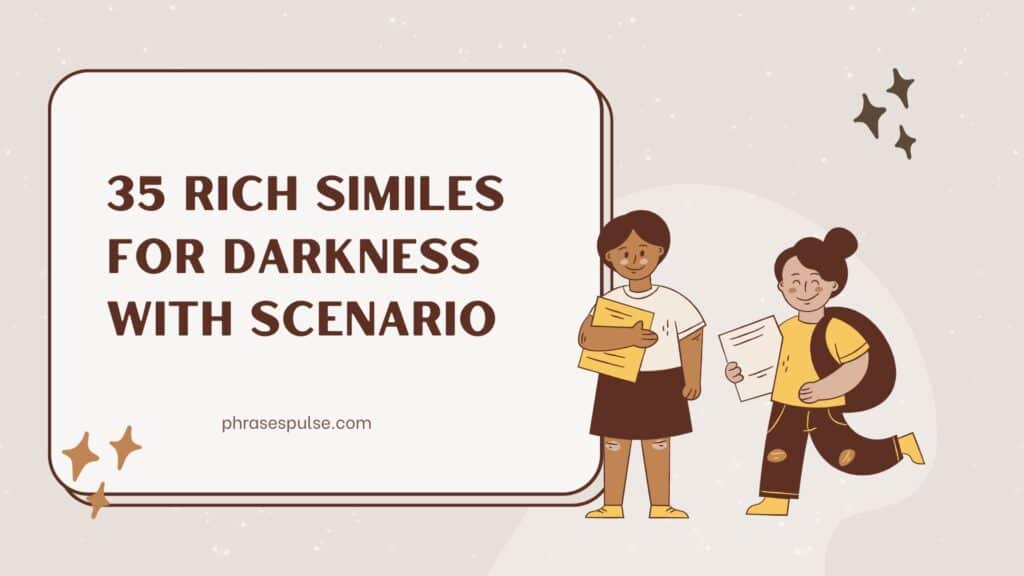Darkness has always been a mysterious theme in literature. similes-for-darkness It’s more than just the absence of light—it’s a whole vibe of profound obscurity and emotions that really pull readers in.
Well, that’s where similes come in handy. They create vivid comparisons and help us paint pictures of those enigmatic shadows using figurative language.
In this article, we’ll dive into 35 similes for darkness, breaking down how they evoke emotions and captivate with expressive language.
What is a Simile?
A simile is a literary tool that compares two things using “like” or “as.” It enhances language and helps paint vivid pictures in the reader’s mind.
Instead of simply saying “the night was dark,” a simile like “the night was as dark as the inside of a coffin” adds depth and evokes emotions.
This narrative technique is especially useful for describing darkness, tapping into our fear of the unknown and stirring deeper feelings.
Understanding the Symbolism of Darkness
Darkness isn’t just an absence of light; it’s a symbol loaded with hidden meanings. In many cultures, darkness is associated with mystery, fear.
The absence of celestial light, and sometimes even comfort. This dual nature makes darkness a fascinating subject for literature and creative writing.
35 Rich Similes for Darkness

Similes allow writers to make figurative comparisons that help clarify meanings, create imagery, and evoke emotions.
Below are 35 similes categorized by the type of darkness they depict:
Similes for Mysterious and Foreboding Darkness
| Simile for Darkness | Example |
|---|---|
| As mysterious as a moonless night | The forest felt as mysterious as a moonless night. |
| Dark as the secrets we bury | His past was as dark as the secrets we bury. |
| As elusive as a shadow slipping through fingers | The truth was as elusive as a shadow slipping through fingers. |
| Dark as the farthest corners of the mind | Her memories were as dark as the farthest corners of the mind. |
| As shadowy as a forgotten memory | The old house felt as shadowy as a forgotten memory. |
| Dark as an abyss | The cave stretched on, dark as an abyss. |
| As shadowy as a lurking figure in the distance | The figure appeared, shadowy as a lurking figure in the distance. |
| Dark as a raven’s wing | The sky turned dark as a raven’s wing. |
| As terrifying as a pitch-black alley at midnight | Walking through the woods felt as terrifying as a pitch-black alley at midnight. |
| Dark as the void between the stars | The ocean seemed as dark as the void between the stars. |
Similes for Comforting or Symbolic Darkness

| Simile for Darkness | Example |
|---|---|
| As soothing as twilight | The evening air was as soothing as twilight. |
| Dark as a velvet curtain drawn against the world | The room was dark as a velvet curtain drawn against the world. |
| As silent as a shadow | He moved as silent as a shadow through the house. |
| Dark as the inside of a peaceful cave | The night was dark as the inside of a peaceful cave. |
| As quiet as the night sky | Her thoughts were as quiet as the night sky. |
| As dark as a storm cloud gathering on the horizon | His mood was as dark as a storm cloud gathering on the horizon. |
| Dark as the depths of space | The forest was dark as the depths of space. |
| As deep as the ocean’s trenches | Her sorrow was as deep as the ocean’s trenches. |
| Dark as Edgar Allan Poe’s nightmares | His thoughts were as dark as Edgar Allan Poe’s nightmares. |
| Dark as Macbeth’s ambition | The atmosphere was dark as Macbeth’s ambition. |
35 Rich Similes for Darkness with scenario :

Mystery and the Unknown
- “As mysterious as a moonless night” – captures the enigma of deep shadows.
- “Dark as the secrets we bury” – suggests a hidden, profound obscurity.
- “As elusive as a shadow slipping through fingers” – evokes a sense of something impossible to grasp

